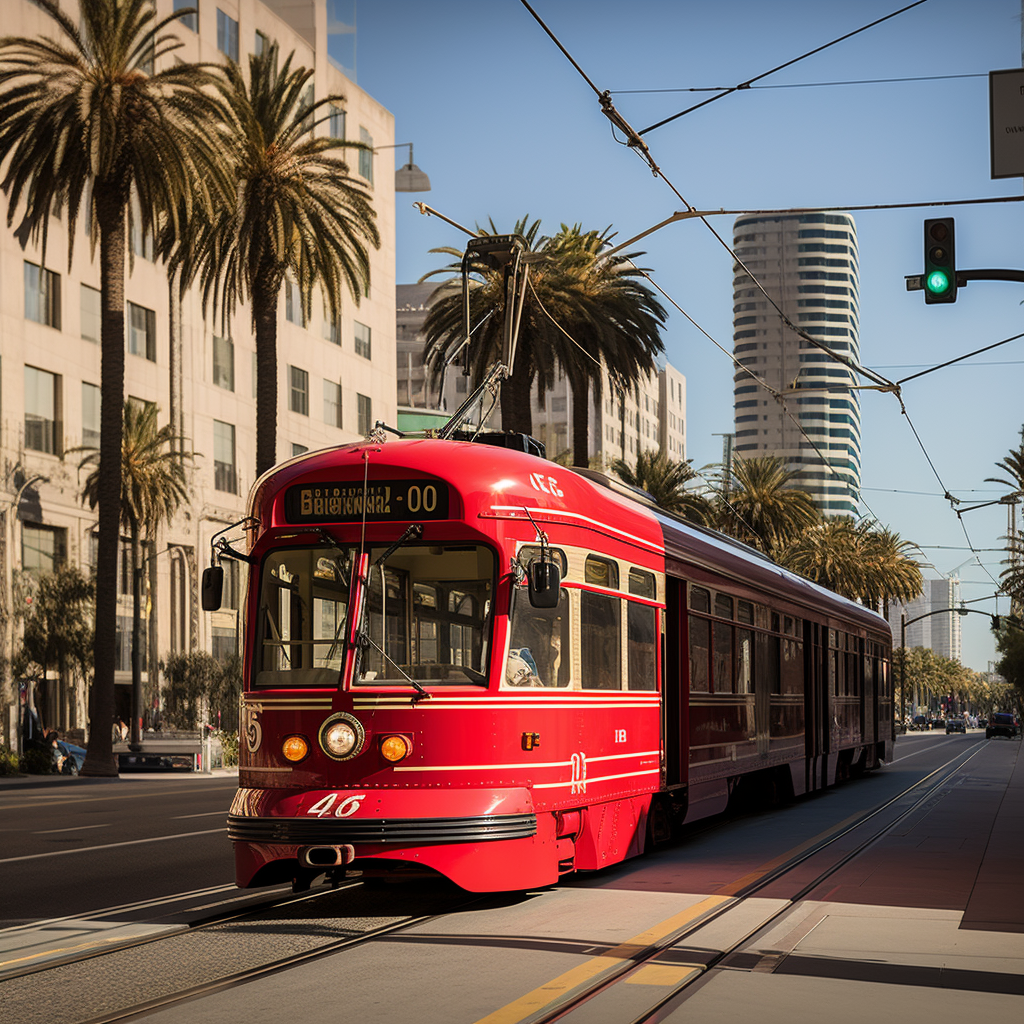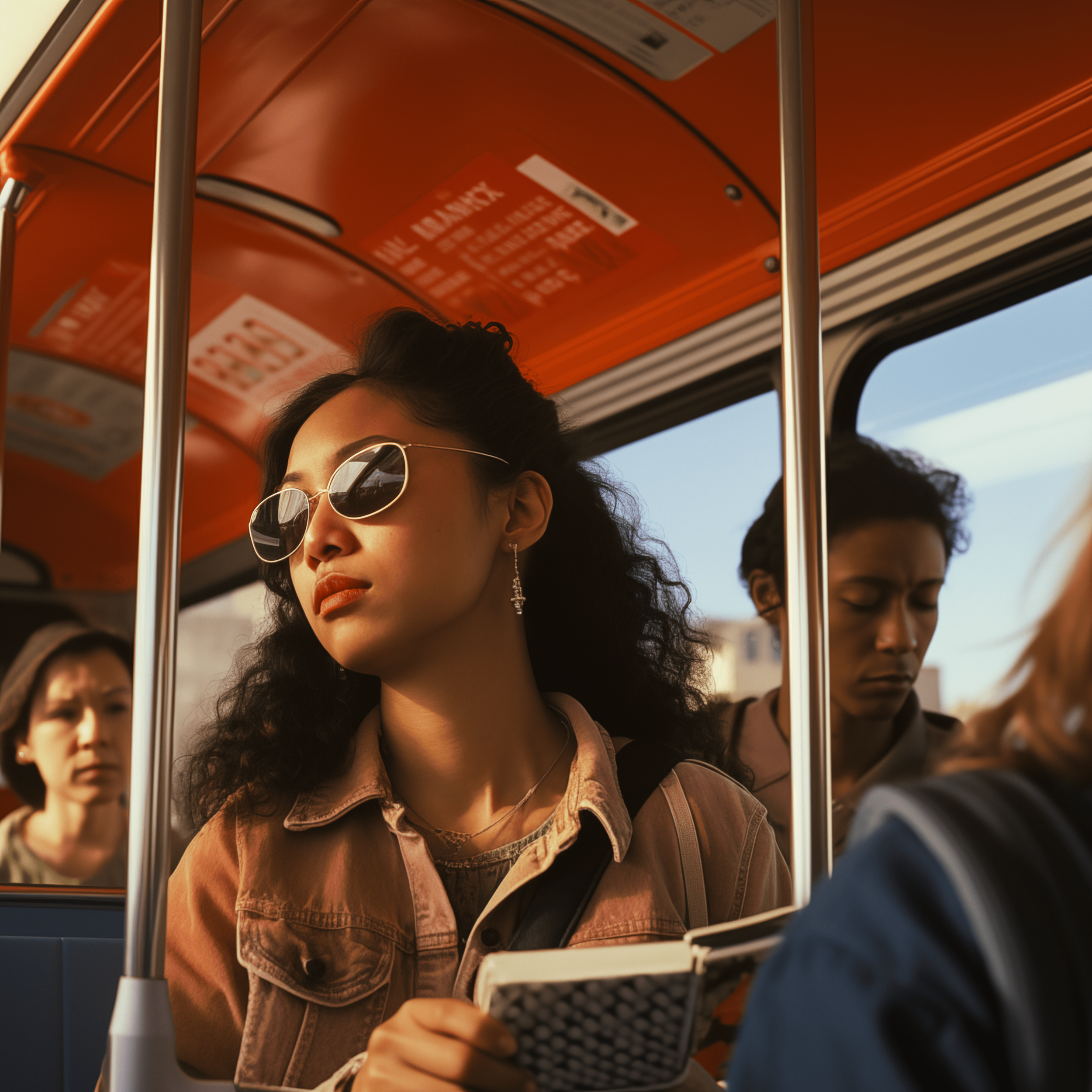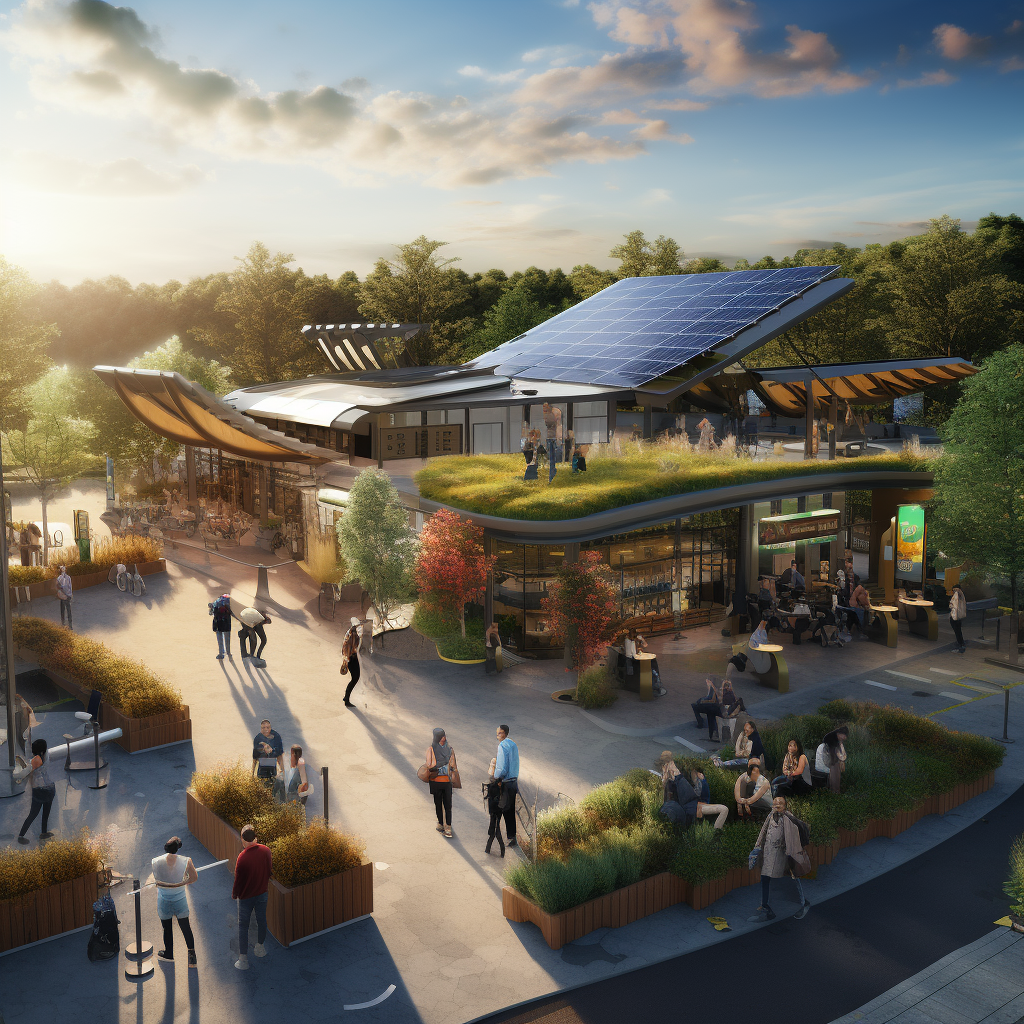
RED CAR FUTURES
AN AI-POWERED STORYTELLING PROJECT
Back to the Future
The Rise, Fall and Return of LA's Beloved Red Cars
Los Angeles was built around the Pacific Electric Railway, which started operating in 1901. The striking red streetcars crisscrossed LA, connecting downtown to the suburbs. At its peak in the 1920s, the "Red Cars" ran over 1,000 miles of track and were a beloved part of the city.
But in the post-war years, as car ownership rose, ridership declined. The last Red Car ran in 1961. The tracks were torn up and freeways carved up neighborhoods. LA became synonymous with traffic and smog.
In the early 2010s, with congestion worsening and climate change accelerating, LA started reimagining its future. Inspired by cities revitalizing light rail, LA passed Measure M in 2016 - a sales tax to fund major transit projects.
The centerpiece was restoring the Red Car network starting in 2028. sleek, modern streetcars built in LA factories brought back the iconic transit system. Running on renewable energy, the Red Cars reconnected neighborhoods and got Angelenos out of their cars.
LA implemented supportive policies like pedestrianizing streets, subsidizing transit passes and redesigning around transit hubs. Ridership skyrocketed as the Red Cars wove back into the fabric of LA.
By 2037, the full 190-mile system was completed. The return of the Red Cars signaled LA's transition to a greener, more connected future. Their motto said it all: "Back to the future."
It's 2042 and we're gathered for a dinner party at Celine's urban farm and kitchen in Apex, North Carolina. As a chef, Celine spotlights Southern black culinary traditions and sources all her food from local regenerative farms.
This abundance was made possible by the historic Agricultural Regeneration Act of 2030. It provided financial incentives for farmers to adopt regenerative practices - cover cropping, no-till, crop rotation, composting. Over a decade later, the landscape has transformed.
Soil quality has skyrocketed, capturing billions of tons of CO2. Biodiversity is flourishing, from reintroduced bumblebee populations to returning songbird migrations. Small farms are thriving thanks to grants, subsidized loans and guaranteed income.
As we sit down to Celine's spread of heirloom beans, collard greens, catfish stew and sweet potato pie, she shares the stories of the farmers behind this feast. The conversation and laughter flows as freely as the artisan cider.
This dinner offers a taste of the future that the Agricultural Regeneration Act has made possible. Local, sustainable food and farming has been revitalized, ecologies are healing, and communities are connected. To 20 more years of good food and better policies!
It's 2034 and gas stations across America are being reinvented. The Gas Station Transition Act of 2026 sparked this change by offering grants and tax incentives to convert outdated fossil fuel infrastructure.
Stations like this one in small-town Iowa have been transformed into vibrant community spaces. The pumps came out and in went EV chargers, a cafe, coworking space and even a mini-library.
Early adopters discovered gas stations were perfectly located real estate in the heart of neighborhoods. And they wanted to bring people together, not just fuel their cars.
The transition accelerated in the 2030s as gas-powered cars declined. By funding grants, loans and job retraining programs, the Act ensured a just transition for small station owners and workers.
Now millions who once filled up are now gathering, connecting and imbibing lattes. Neighbors young and old are experiencing a revived sense of community.
It's a refueling of the social fabric, as fossil fuel sites become places to refresh, not just vehicles, but also minds, relationships and local resilience. The future is electric, but also more communal.








